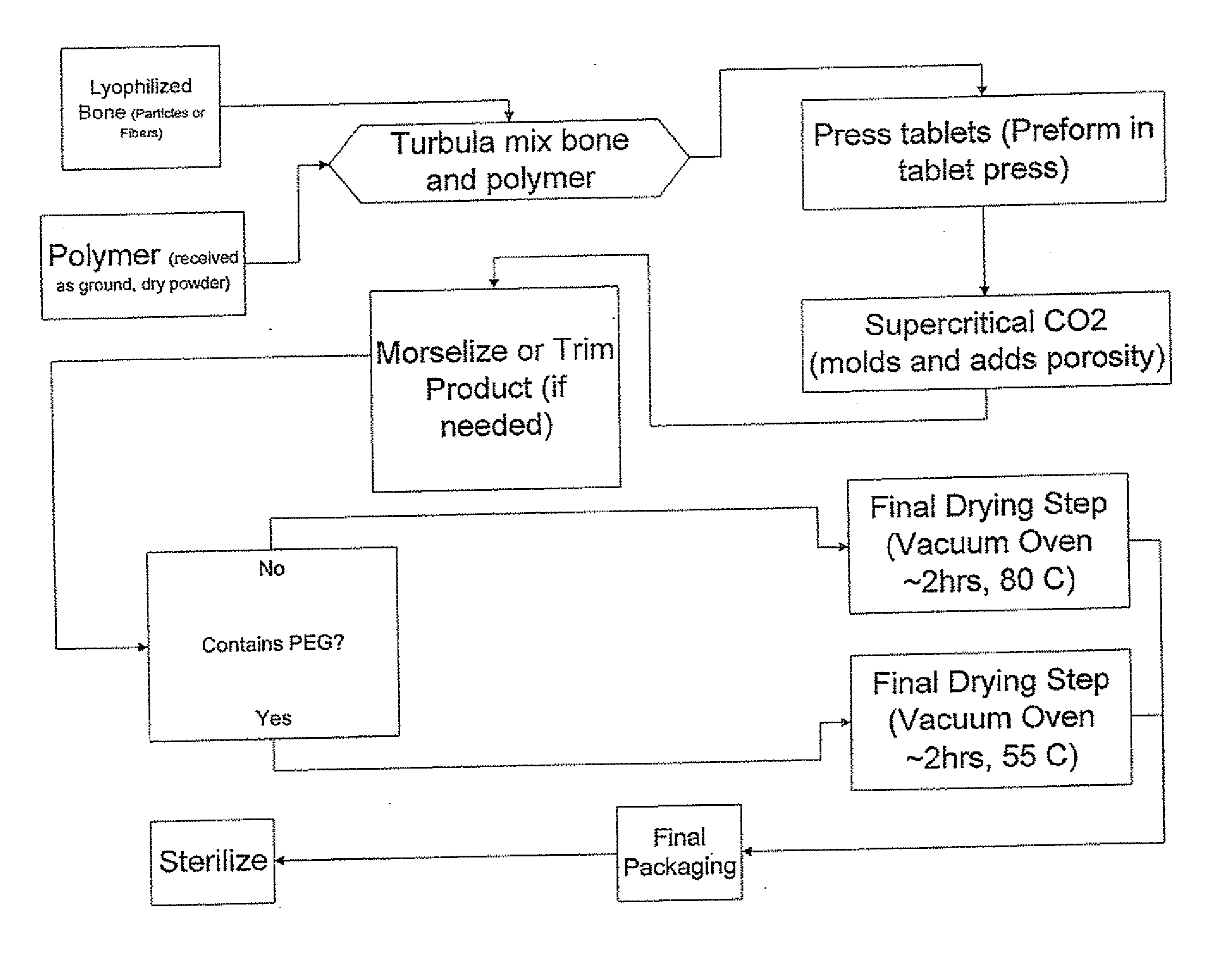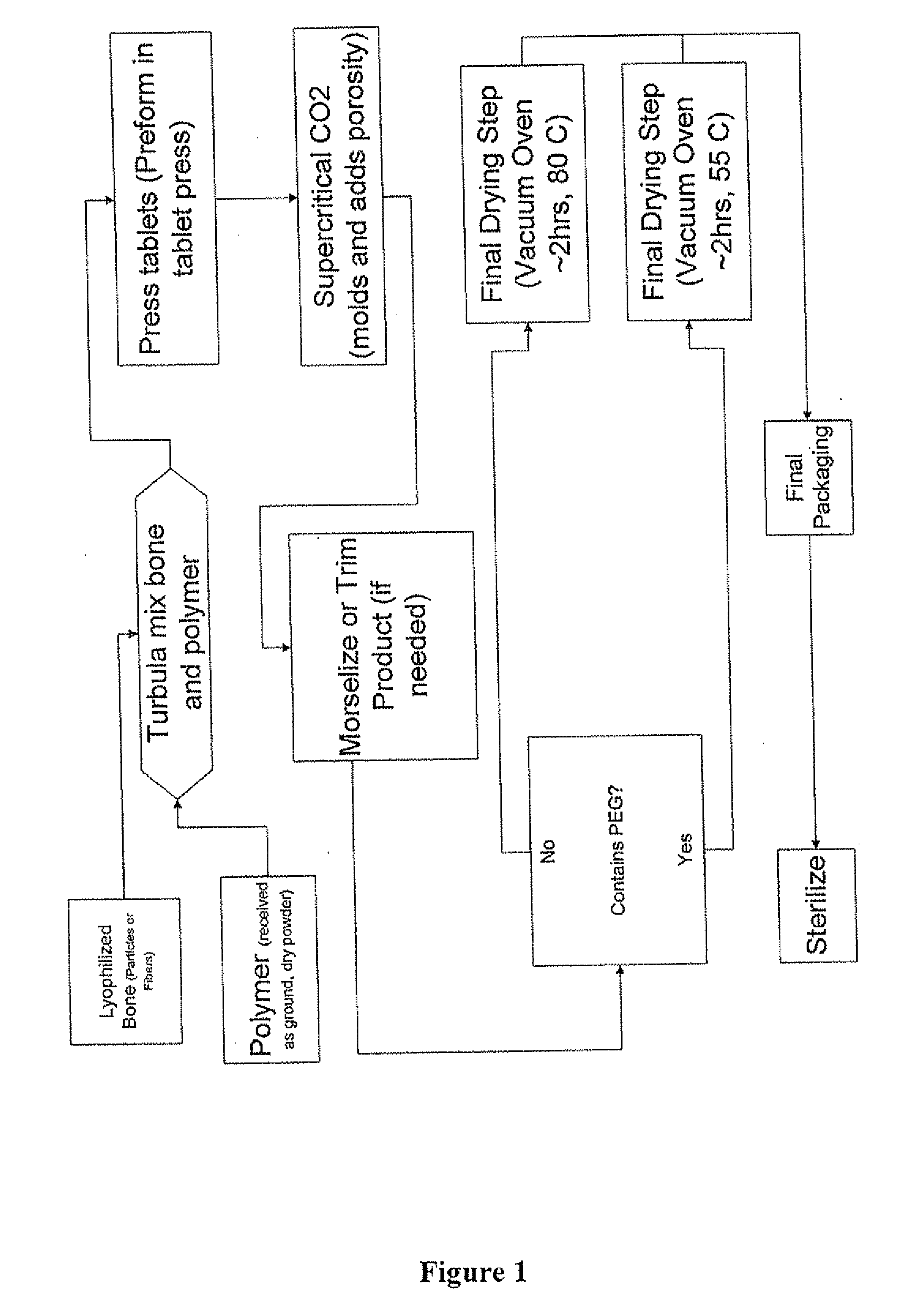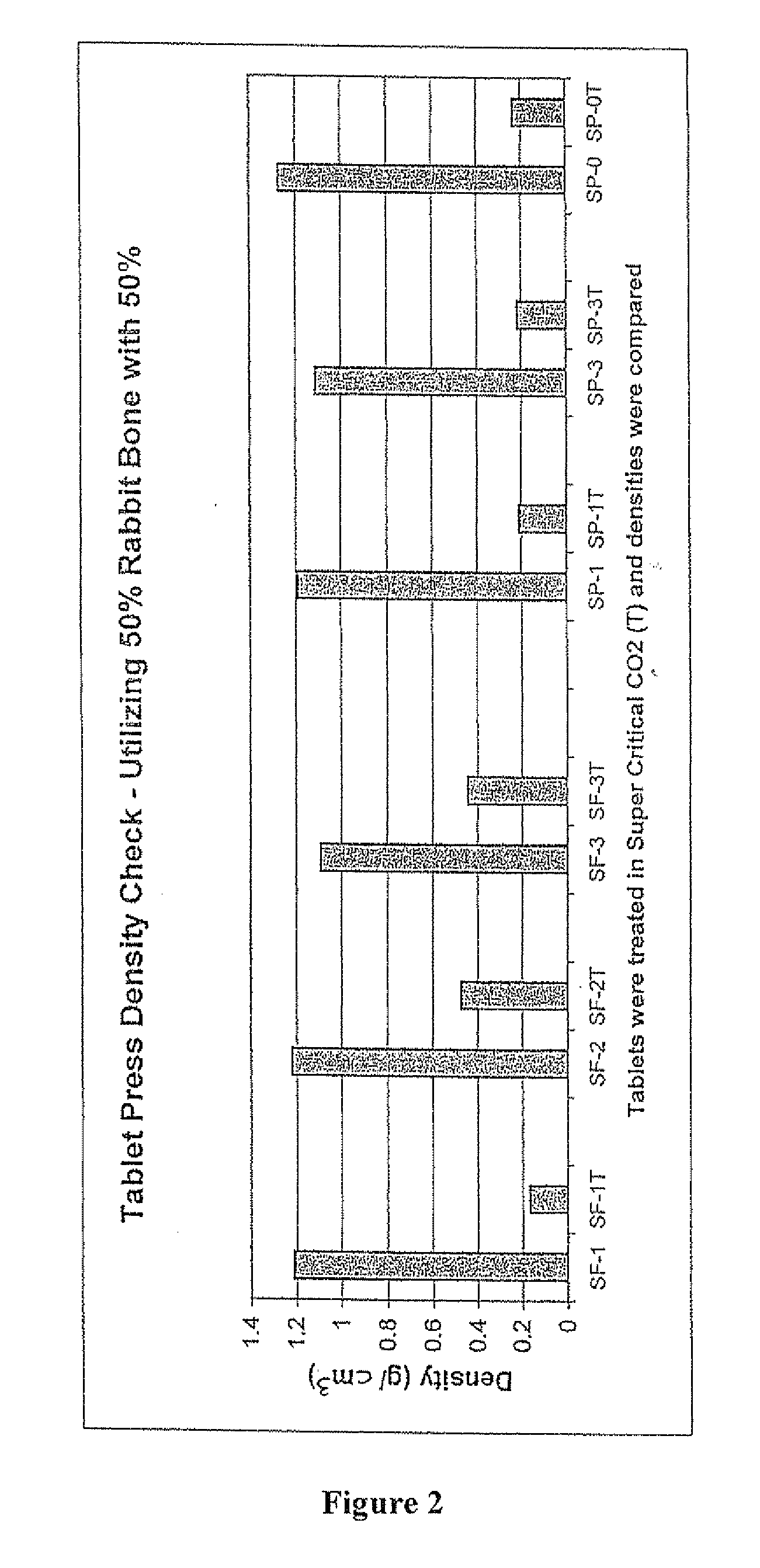Porous osteoimplant
a technology of porous bone and implant, which is applied in the field of porous bone implants, can solve the problems of reducing the bone density around the implant site, fractures and other orthopedic injuries that take a long time to heal, and unable to support physiologic loading, so as to accelerate the remodeling process and promote cellular infiltration
- Summary
- Abstract
- Description
- Claims
- Application Information
AI Technical Summary
Benefits of technology
Problems solved by technology
Method used
Image
Examples
example 1
[0165] Mineralized human cortical bone particles (about 200-500 microns), were mixed in a ratio of about 80 / 20 with RESOMER™ 824 particles ground to about the same size. The mixture was tabletted, and a known number of tablets were placed in a stainless steel cylinder that is closed at one end. The cylinder was then placed in a supercritical CO2 chamber and held at 5000 psi for 1 hour at 115° C. The chamber was allowed to cool to 90° C. and then vented, reaching atmospheric pressure in about 20 seconds. The composite resulting from this process had a porosity of about 60-70%. The wet compressive strength was about 3 MPa at 20% engineering strain but reached 4-5 MPa at higher strains.
example 2
[0166] Composites were prepared as described in Example 1, but with rabbit bone fibers up to about 3 mm long and with a 50 / 50 ratio of rabbit bone fibers and polymer. After supercritical treatment, samples including about half gram of material had porosities of about 61% and about 52%.
example 3
[0167] Composites were prepared as described in Example, but with a 50 / 50 ratio of rabbit bone particles and polymer. The mixture was pre-packed dry at a pressure of about 200 psi and treated with supercritical CO2 as in Example 1. Samples of about 0.9 g of the resulting product had a porosity of about 62% and about 77%.
PUM
| Property | Measurement | Unit |
|---|---|---|
| Fraction | aaaaa | aaaaa |
| Time | aaaaa | aaaaa |
| Time | aaaaa | aaaaa |
Abstract
Description
Claims
Application Information
 Login to View More
Login to View More - R&D
- Intellectual Property
- Life Sciences
- Materials
- Tech Scout
- Unparalleled Data Quality
- Higher Quality Content
- 60% Fewer Hallucinations
Browse by: Latest US Patents, China's latest patents, Technical Efficacy Thesaurus, Application Domain, Technology Topic, Popular Technical Reports.
© 2025 PatSnap. All rights reserved.Legal|Privacy policy|Modern Slavery Act Transparency Statement|Sitemap|About US| Contact US: help@patsnap.com



